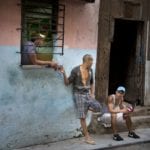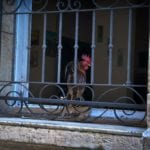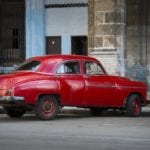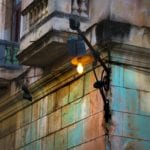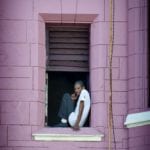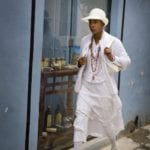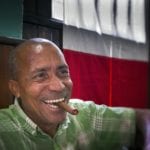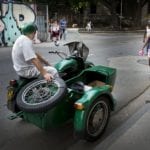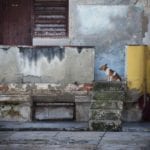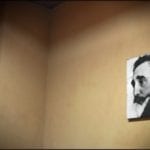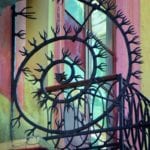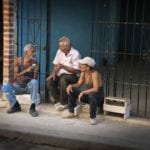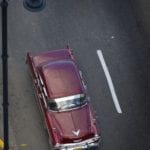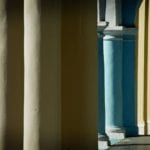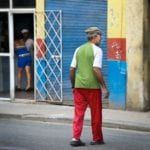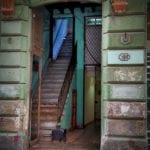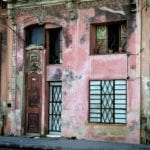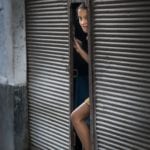March 2013
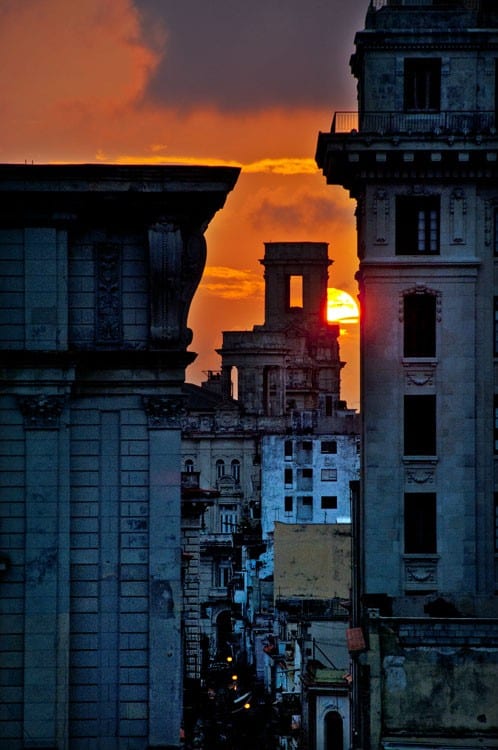
Nancy McCrary: Chip, first of all, thank you for this interview. The University of Alabama, where you are an artist in residence at the Honors College, has a special relationship with Cuba. What can you tell us about that, and what influence did it have with your visiting the island and your eventual book, Old Havana?
Chip Cooper: For more than three decades, I have captured the images of a mythic South in transition. My trademark landscape photographs — often focusing on a mere architectural detail — have been published in six books and resulted in national and international exhibitions. My creative vision shifted in 2002 when I made my first trip to Cuba, one of few American photographers to be given such access.
I was afforded the opportunity to photograph the people and places of Havana as part of my faculty research at The University of Alabama where I am artist-in-residence at UA’s Honors College and a faculty member in UA’s College of Arts and Sciences. I was introduced to my latest subject through the University’s Alabama-Cuba Initiative, which, since 2002, has brought UA and Cuban educators together to establish opportunities for graduate student research and teaching and formal course work for undergraduate students at Cuban academic institutions. In 2008, I was offered the unprecedented opportunity to join with native photographer Néstor Martí of the Havana Historian’s Office in documenting the oldest and most historically rich quarter in Cuba’s capital city. The invitation, from Eusebio Leal Spengler, historian of the city of Havana and director of the Old Havana restoration project, gave us creative rein to capture the essence of the old city.
My first trip showed me the similarities between the American South and Cuba, both very misunderstood and both having warm spirits that drive our need to connect to the land.
NM: Old Havana is a collaboration between you and Nèstor Martí, a Cuban photographer with whom you were introduced by the Cuban government. His day job, so to speak, in Havana parallels yours with the University, yet your styles are different, very individual. How did you decide on a narrative, or did you? And did you work together, or separately?
CC: When we first met I knew we needed to connect as soon as possible. To break the ice, I asked him who his favorite photographer was. His answer was Walker Evans, for his early work in Cuba. Mine is also Evans, but for his work in Alabama of sharecroppers in Let Us Now Praise Famous Men. I also saw his day job was exactly what mine was before I started teaching: capturing events for publication. But his art time was as a street photographer, mine was in the landscape. I suggested our common point was how we both felt about Evans’ work: honest, compassionate, and with integrity. It is how we always approached our subject, but with different styles. I grew because I had to learn to shoot in the street; timing was everything. It made me appreciate Cartier- Bresson’s decisive moment even more.
Since I had worked on several books, I had an idea of how to organize subject matter to maximize our time together. For example, we worked on the sense of the island by shooting water, old people, young people, modes of transportation, architecture, etc. We shot together and that was a change for both of us since mostly we had each worked alone. Sometimes we saw the same subject matter but at different points in the street. We truly collaborated all the time. Later, we would look at each other’s work and see what was good and what could be better. Julio Larramendi, a Cuban photographer, helped me understand Havana from his perspective and helped us edit our work. The narrative day to night was suggested by Dan Waterman, our Alabama Press editor, and it gave our images a flow. This project was a true collaboration from beginning to end.
NM: Walker Evans was an inspiration to both you and Martí. During his time in Cuba there was overt resistance and upheaval, an energy you can sense in his photos. In photos of Cuba today I sense people who are more resigned to their station – but not without glimmers of that old energy, just beneath the surface so to speak. What were some of your experiences working with the people? And were the challenges different?
CC: History shows that Cubans have always had some sort of dictator government. Evans saw an overt oppression whereas we were shooting with over 50 years of communism, a more stable day-to-day existence but in many ways just as hard. I quickly saw we Americans live mostly in our wants and they live totally in their needs. Every Cuban will tell you life is hard but good; this is the spirit of people who have learned to survive by an ingenuity that is unbelievable to see. I have said 2+ 2 = 5, what is on the surface and what is beneath don’t always add up, we tried to capture both.
NM: Artists in Cuba live in very different circumstances than their counterparts in the U.S. Can you share with us some of your experiences working with them?
CC: Lack of resources is what makes the difference; many times they are making things we just buy to create. I think this is why a lot of their work has an edge. Néstor took me to a fashion show, Havana’s Milan showing. Since lack of fabrics was a problem many people had to substitute for material. The best outfit I saw was made of those white slide mounts we all used that are now outdated. The designer had constructed an incredible dress out of 2,000 slide mounts. The need to either fix what is broken or make what you need causes a whole different approach to how you create.
NM: The photographs in Old Havana were taken over a period of three years. How long was the making of the book, start to finish? And what are your recommendations to others about to embark on a collaboration?
CC: Took our first photographs Spring 2008 and last ones Fall 2011, 3 years off and on shooting. Two weeks in Havana editing and seeing how images would work together. One year with Alabama Press in writing narrative bi-lingual, layout printing book overseas, out March 2012. This was by far the longest project I have ever done for a published book .To collaborate you have to curb your ego, you have to find a way to blend your individual vision with another’s. Seems easy but it is not .
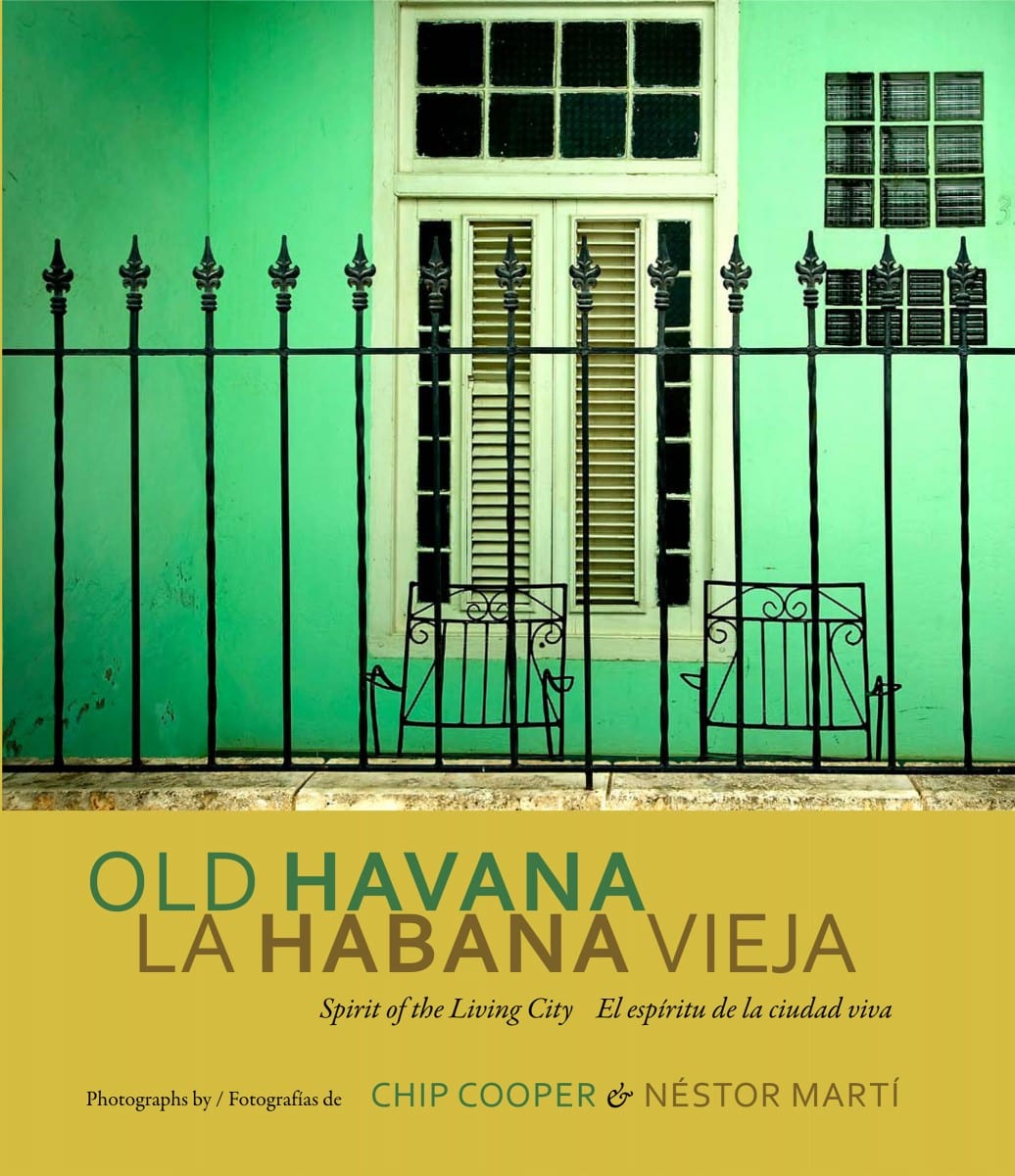
http://www.uapress.ua.edu
“Photographing Cuba has become a must-do cliché for photographers. Go there and find the same old rusting cars and rotting buildings done a million times. What’s the point? Chip Cooper arrived to collaborate with native Néstor Martí, and I don’t know if that made a difference; but Cooper goes way beyond the worn-out clichés. He was smart enough to hold off the first time he set eyes on a strange, foreign land and resisted photographing things that only looked strange to foreigners. He soaked up the people, places, and culture of the country—the sights, sounds and smells—and then he went to work to document with images and his feelings. What results is like a fresh morning wind blowing off the Atlantic. It feels so good! Cooper sees the port as stormy, perhaps a metaphor for the past and the future. Néstor Martí sees it more calm and sunny. It is wonderful to see the viewpoints of two photographers in love with the country and its people. Our eyes feast on people fishing, sitting, and enjoying the sun. A street corner becomes magical in the twilight. I know the freshness, poetry, and charm of these photos because as photo editor of Time magazine I saw millions of photos over twenty-five years, including thousands of Cuba in conflict and peace. What Chip Cooper and Néstor Martí have accomplished should be seen by everyone who is fascinated by the great country south of the United States. Go there and see for yourself through their images.”
—Robert Stevens, former photo editor, Time magazine
“The photographs are full of love for the Cubans and … give us a dignity that really fills us with pride.”
—Julio Larramendi, photographer and author, Havana, Cuba
“Absolutely lovely. Very restrained and elegant and a clear collaboration. What a wonderful project. I had always wanted to see Cuba before I kicked the bucket, but now, maybe I have this book and that’s enough.”
—Sally Mann, one of America’s most renowned photographers. Her many books include Second Sight, Immediate Family, What Remains, Proud Flesh and The Flesh and the Spirit
Biography
Chip Cooper was the Director of Photography for the University of Alabama for 33 years and is now Artist in Residence in the Honors College and a faculty member in the Arts & Science College. He received his BA from the University of Alabama in 1972 followed by post-grad work in photography. While working for the university he was published in Horizon Magazine, Antique Monthly, Antiques & Fine Arts Magazine, Newsweek, Village Voice, USA Today, Modern Maturity, Northeast Orient Magazine, Alabama Heritage, Sophisticated Traveler – The New York Times, Mercedes International, Veranda, and Southern Accents.
Cooper’s photography books include Hunting the Southern Tradition; Alabama Memories; Silent in the Land & Common Threads; Crimson: The University of Alabama; Charlie Lucas, the Tin Man; and Habana Viejo, Old Havana. Cooper won an award of excellence for his book Silent in the Land from Communication Arts magazine and is a past recipient of an Artist Fellowship from the Alabama State Council on the Arts. He has shown his work nationally and internationally and his work is in many museums and private and corporate collections.
Harper Lee, author of To Kill A Mockingbird, says about Cooper, “You are a very great American photographer plus Georgia O’ Keefe rolled into one. O’Keefe because you have her eye. You paint with film.”

http://www.chipcooper.com/
Jerry Atnip
Jerry Atnip has a 38-year career as a commercial and fine art photographer. His images have been published in 40 countries, and since 2003, he’s held over 75 exhibitions and been presented with over 90 awards. He is also a teacher, workshop director, curator, juror, frequent lecturer and serves on the boards of several Arts &
Photography organizations, including Atlanta Celebrates Photography festival and Slow Exposures Photofestival. His work has been collected by museums, corporate and private collectors and he is an Exhibiting Member of The National Arts Club in New York.


